Movement impacts the whole body from the top of your head to the tips of your toes. By getting the blood flowing you send oxygen to all your cells helping the different bodily functions including the 11 main human body systems, besides, once you are conditioned to a certain activity, exercising simply helps you feel good !
The correct balance of exercise and rest reduces inflammation, the risk of infection and reduces the aging effect. Don`t wear yourself out or flatten yourself by over doing it though but work on short bursts, recover and repeat working around your own fitness level and build on that. Rest is also an important aspect of your training helping the body to recover to build more strength and improve and so developing a routine ( habits ) of workouts with rest is vital for improvement and continuity.
Daily movement promotes chemical changes in the body and stimulates neural pathways boosting 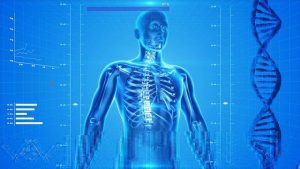 immunity.
immunity.
The Benefits of Movement for the 11 main body Systems.
1.The Circulatory (cardiovascular) System circulates blood around the body via the heart, arteries and veins delivering oxygen and nutrients to organs and cells and removing waste matter. Exercise strengthens this system and efficiency improves as you increase the frequency and the intensity of the exercise. Spin Bikes and Treadmills are a great way to strengthen your cardiovascular system and although high intense exercise gives maximal health any aerobic exercise is beneficial.
2. The Digestive & Excretory System includes the mouth, esophagus, stomach and the intestines. This system absorbs nutrients and removes waste via the gastrointestinal tract part of which are the intestines. (Note once the nutrients are absorbed by the digestive system the circulatory system takes over and delivers those nutrients to the organs and cells). Exercise helps move food through the intestinal track, alleviates gas, stomach cramps and constipation. Some of the best exercises are Walking, Running, Cycling and Stretching.
3.The Endocrine System influences the function of the body using hormones. It is made up of the pituitay gland, thyroid gland, parathyroid gland adrenal glands, the pancreas, ovaries (in females) and testicles (in males). Exercise increases the production and release of growth hormones including testosterone, cortisol and prolactin to name some. With reference to increasing testosterone levels there are several benefits including 1. Healthy heart and blood. 2. Body fat is reduced as testosterone increases muscle mass. 3. Stronger bones. 4. Improves thinking and memory.5. Better libido and erectile function (in older men). 6. Improves mood, low levels of testosterone effects depression, fatigue and irritability. All exercise is beneficial for testosterone levels but interval cardio training and weight lifting are more beneficial than chronic endurance training. Studies are not clear on all the direct benefits of exercise on the Endocrine System but lack of exercise along with bad diet causes obesity, diabetes and aging will damage this system.
4.The Integumentary System includes the skin, hair and nails, regulates body temperature and is involved in sensory receptors to detect pain, sensation, pressure and temperature. The Integumentary System is benefited by blood flow which nourishes the skin, hair and nails and removes waste products including free radicals so exercise is a great benefit to this system.
5 The Immune & Lymphatic Systems which comprise a network of Lymphatic vessels that carry clear fluid called lymph which contains 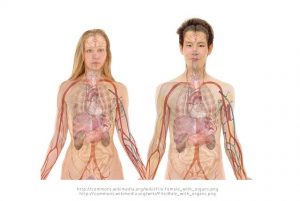 antibodies,lymphocytes and bacteria defending the body against pathogens (an infectious agent) that may harm the body. Exercise increases blood flow, reduces stress, inflammation and pumps the lymph fluid more effectively and boosts the body`s ability to fight off illness. The immune system is very responsive to exercise and so regular workouts 3 or 4 times a week strengthens your immune system.
antibodies,lymphocytes and bacteria defending the body against pathogens (an infectious agent) that may harm the body. Exercise increases blood flow, reduces stress, inflammation and pumps the lymph fluid more effectively and boosts the body`s ability to fight off illness. The immune system is very responsive to exercise and so regular workouts 3 or 4 times a week strengthens your immune system.
6. The Muscular System is made up of the the muscles which enable the body to move. Exercise builds and strengthens muscles which protect bones and joints and improves balance and coordination. With an improved blood supply from exercise the oxygen uptake to the muscle is also improved . Aerobic exercises such as walking, cycling and running increase endurance while anaerobic exercises such as weight and interval training increase strength while stretching improves the range of motion of the muscles and your joints.
7. The Nervous System collects and processes information from your senses via the nerves and the brain than tells the muscles to contract to cause physical actions. Exercise increases the heart rate which pumps more oxygen to the brain and so has direct effects that may help to maintain and strengthen brain function and promote brain plasticity by stimulating growth of new connections between cells in many important cortical areas of the brain. Exercise makes the brain more resistant to aging and stress helping with anxiety and depression. Research shows that using your muscles, weight bearing exercise particularly with your legs, sends signals to the brain that are vital for the production of healthy neural cells which are essential for the brain and nervous system.
8. The Renal System and Urinary System. The system where the kidneys filter blood to produce urine and get rid of waste. The best exercise for these systems are aerobic such as walking, swimming, cycling, skiing, aerobic dancing or generally exercise using the large muscle groups. Conditioning exercises may also be of benefit.
9. The Reproductive System involves the organs for the production of offspring and exercise will regulate the energy balance throughout the body. Examples of moderate types of exercise for the Reproductive System include Walking, Jogging, Yoga, Swimming, Dancing, Cycling and Aerobics.
10. The Respiratory System brings air into the lungs to absorb oxygen and removes carbon dioxide and bacteria from the lungs and airways. Regular exercise increases the strength and efficiency of your heart and lungs to deliver oxygen to your muscles. Concentration on breathing for all of your exercises will improve your Respiratory System but specific exercises for deep breathing such as with yoga, pilates and even weight lifting are of great benefit.
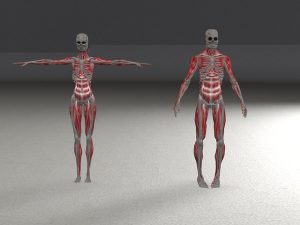
11. The Skeletal System is made up of bones which form the structure of the body and its organs. The benefit of exercise on your musculoskeletal system is by gaining strength and so being able to carry your weight, achieving balanced alignment, improve bone density and strengthen joints which reduces the risk of injury. Strength training exercises including weight bearing exercise such as walking, hiking, running, climbing stairs or hills etc and resistance training including lifting weights, calisthenics and (advanced) yoga are best. (Check out Amazon for a whole range of great Yoga and Pilates books and Audio books)
Consider the PACE training method
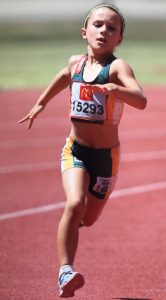 body is chemical energy consumed in food and it comes in the form of Adenosine Triphosphate or ATP and than converted into mechanical energy. We use this energy for our biological activities which is every thing we do for example our thought process, the breakdown of food, our movement and reproduction etc.
body is chemical energy consumed in food and it comes in the form of Adenosine Triphosphate or ATP and than converted into mechanical energy. We use this energy for our biological activities which is every thing we do for example our thought process, the breakdown of food, our movement and reproduction etc. nd all parts in between from head to toe. At a cellular level every body part is saturated with water, water transports nutrients around the body, removes toxins, maintains body temperature and if you start to overheat (from exercise, the weather, lack of water, excessive use of alcohol) all parts of your body will have to work harder, the heart won`t function efficiently, muscles may cramp, blood vessels constrict causing less blood flow than headaches and fatigue may follow. Exercising or not the body needs water so make sure you hydrate regularly and as you increase physical activities the increase in your fluid intake is also necessary.
nd all parts in between from head to toe. At a cellular level every body part is saturated with water, water transports nutrients around the body, removes toxins, maintains body temperature and if you start to overheat (from exercise, the weather, lack of water, excessive use of alcohol) all parts of your body will have to work harder, the heart won`t function efficiently, muscles may cramp, blood vessels constrict causing less blood flow than headaches and fatigue may follow. Exercising or not the body needs water so make sure you hydrate regularly and as you increase physical activities the increase in your fluid intake is also necessary. immunity.
immunity. antibodies,lymphocytes and bacteria defending the body against pathogens (an infectious agent) that may harm the body. Exercise increases blood flow, reduces stress, inflammation and pumps the lymph fluid more effectively and boosts the body`s ability to fight off illness. The immune system is very responsive to exercise and so regular workouts 3 or 4 times a week strengthens your immune system.
antibodies,lymphocytes and bacteria defending the body against pathogens (an infectious agent) that may harm the body. Exercise increases blood flow, reduces stress, inflammation and pumps the lymph fluid more effectively and boosts the body`s ability to fight off illness. The immune system is very responsive to exercise and so regular workouts 3 or 4 times a week strengthens your immune system.
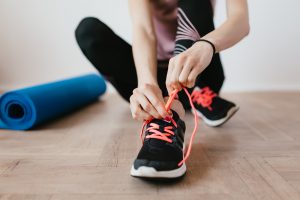 It is said the the hardest part of the workout is putting your shoes on !!
It is said the the hardest part of the workout is putting your shoes on !!